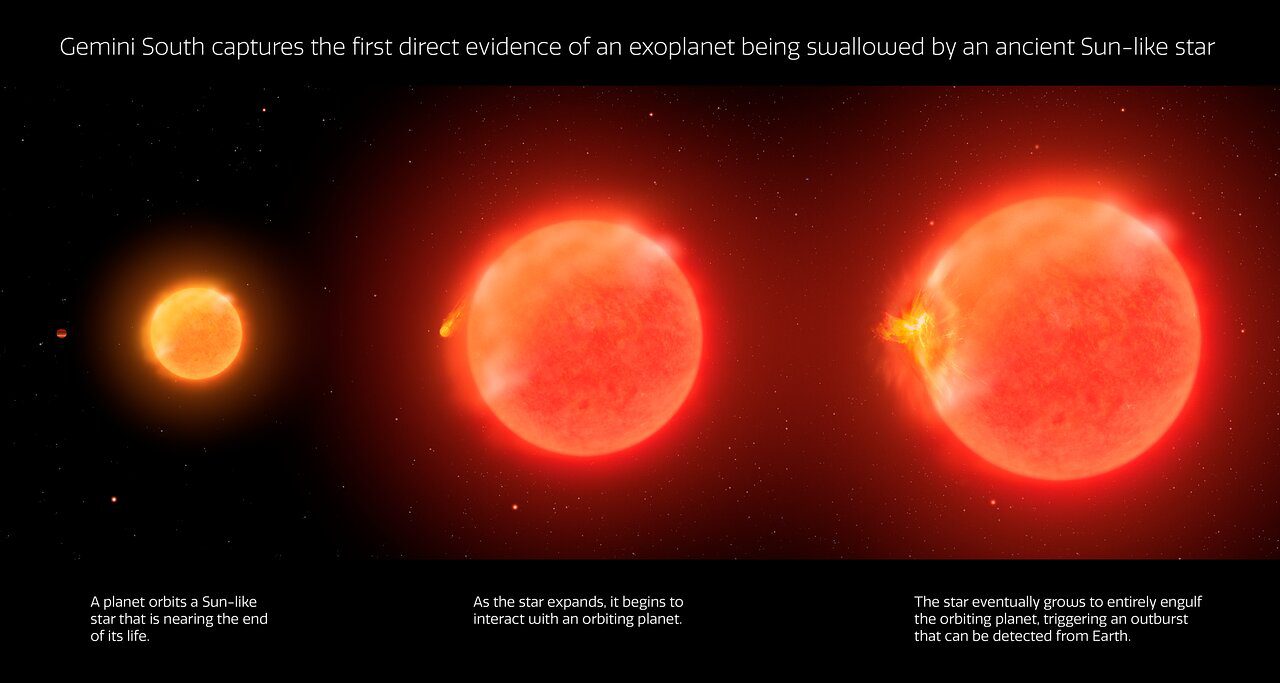When a star runs out of hydrogen to fuse at its core a transformation occurs, the star first collapses a bit on itself to kickstart the fusion of helium and then it expands, becoming a million times larger. That star has become a red giant. Red giants are expected to engulf their closest planets as they expand but this had never been seen before. Until now.
Researchers report the detection of an outburst from a red giant in the constellation of Aquila, the eagle. The star, which is 12,000 light-years away, was spotted having an outburst, making it 100 times brighter over just 10 days before fading. The white-hot flash was followed by a cooler and longer-lasting signal. These observations point to one possible event: a planet being eaten.
“We were seeing the end-stage of the swallowing,” lead author Kishalay De, a postdoc at Massachusetts Institute of Technology’s Kavli Institute for Astrophysics and Space Research, said in a statement.
Outbursts of red giants are often seen in stellar binaries, one star is stealing material from the other, but this didn’t look like any of the known events. When looked at in infrared, the system looks extremely peculiar. These wavelengths are used to see cooler temperatures and the signal in this case was strong. A star brightening should be getting hotter, not cooler.
How a star swallows its planet. Image credit: International Gemini Observatory/NOIRLab/NSF/AURA/P. Marenfeld
They tracked the signal to cold dust from the star that shot into space and it showed that there wasn’t enough to have come from another star. It must have been a planet. The object was roughly the size of Jupiter, about a thousandth of the mass of the Sun. And it spiraled in towards the star as it expanded.
“For decades, we’ve been able to see the before and after,” De said. “Before, when the planets are still orbiting very close to their star, and after, when a planet has already been engulfed, and the star is giant. What we were missing was catching the star in the act, where you have a planet undergoing this fate in real time. That’s what makes this discovery really exciting.”
Mercury, Venus, and likely Earth and Mars will experience this same fate at the end of the solar system. So this provides a better understanding of what will happen to the Sun and the planets in 5 billion years.
“We are seeing the future of the Earth,” De explained. “If some other civilization was observing us from 10,000 light-years away while the sun was engulfing the Earth, they would see the Sun suddenly brighten as it ejects some material, then form dust around it, before settling back to what it was.”
The study is published in Nature.
Source Link: For The First Time, A Star Has Been Caught Devouring Its Planet
